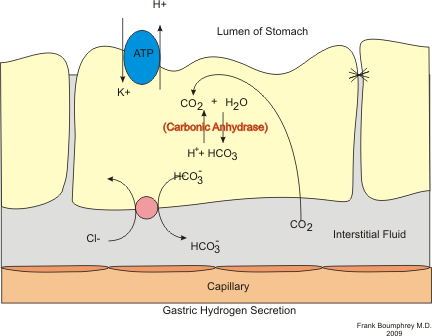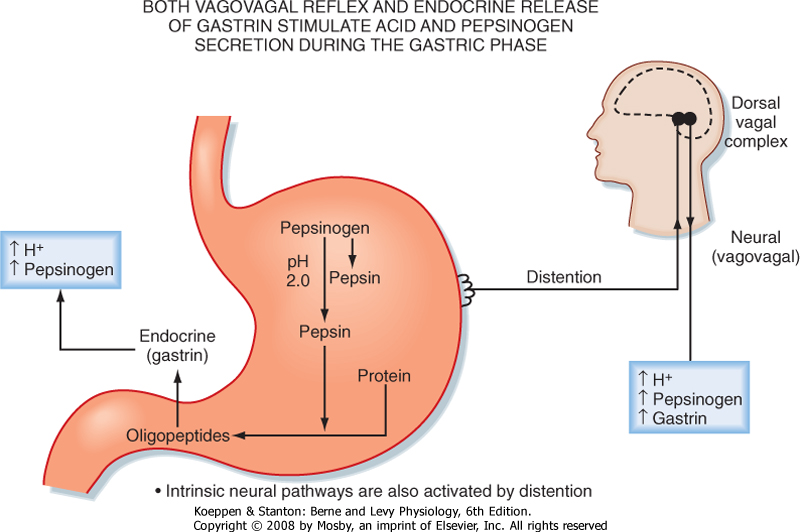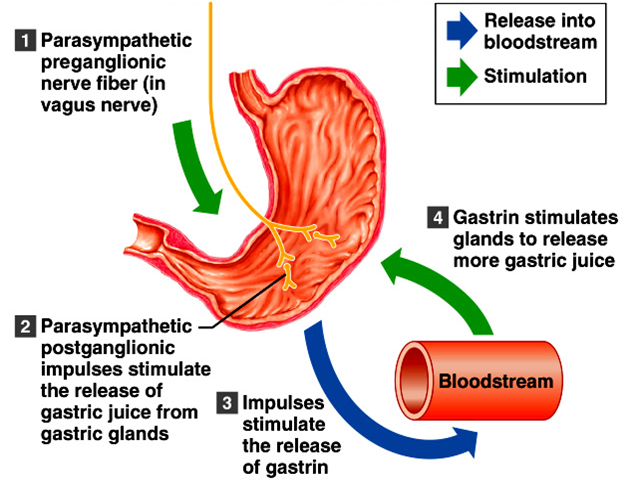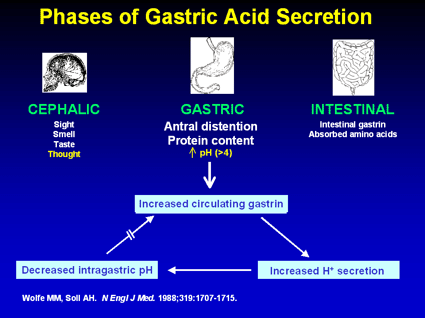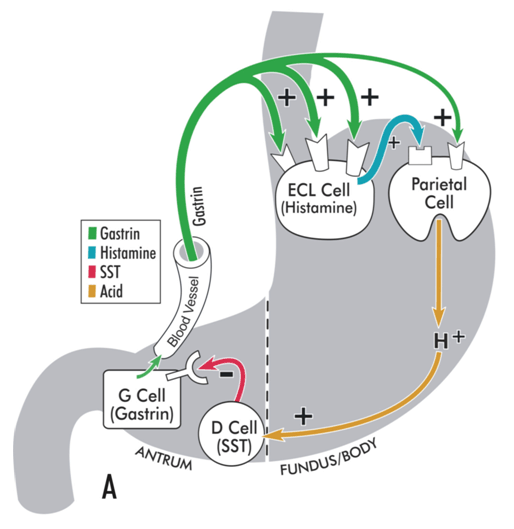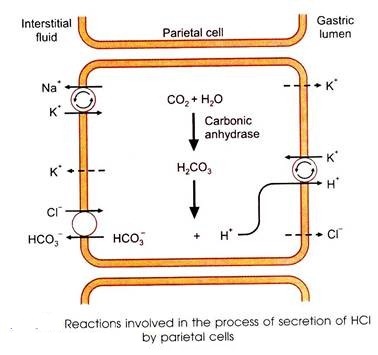Gastric Juice
Dr.A.P.Ganesan
Komarapalayam
Definition
Gastric juice is the combined secretion of the following glands :-
1. Cardiac glands or surface mucous glands
2. Mucus neck cells
3. Chief cells (zymogenic glands)
4. Peptic cells
5. Oxyntic cells
6. Argentaffin cells
7. Goblet cells
General Characters
1. Total quantity - About 1200 ml to 1500 ml/day
500 ml at each meal
Night secretion (during sleep) alone is 400 ml/day
2. Reaction - Strongly acidic fluid, due to the presence of HCl, Lactic acid etc.
3. pH is 0.9 to 1.5
4. Specific gravity is 1.002 to 1.0004
Freezing point is 0.59°C
Composition of Gastric Juice
The gastric juice is made of 99.45% of water and 0 .55% of solids
The solids include 0.15% of inorganic and 0.4% of organic substances
Iorganic substances : NaCl, KCl, CaCl2, CaPO4, MgSO4, HCO3 andHCL
Organic substances :
Mucin
Intrinsic factor
Enzymes include : Pepsin, Cathepsin, gastric rennin, gastric lipase, Lysozymes, Carbonic anhydrase
Functions of Gastric Juice
The enzyme pepsin digests protein to peptones
HCl hydrolises food stuff and also acts as antiseptic. HCl activates pepsinogen into pepsin, provides an acid medium for the action of pepsin, HCl in duodenum stimulates bile secretion and pancreatic secretion
Gastric renin coagulates caseinogen of milk and convers into casein
Gastric lipase digests fat
Excretion of toxins, heavy metals and drugs
Intrinsic fctor helps to absorv vit.B12
The extrinsic factor in the stomach is a factor for maturation of RBCs
Mucin forms a mechanical barrier preventing HCl and pepsin from digesting the mucos of the stomach itself
Mechanism of Gastric Secretion
Gastric juice is a mixture of secretion of different types of glandular cells in the stomach. During fasting, stomach secretes 10-60 ml /hr. After meal, the gastric juice is secreted increasingly
The secretion starts imediately after food and has maximum between 1 1/2 - 2 hours.
Then gradually declines and comes to fasting level after 3-4 hours
Different phases in gastric secretion
Nervous or cephalic phase
Gastric phase
Intestinal phase
Interdigestic phase
Nervous or Cephalic phase
During this phase the gastric secretion occurs even before the food reaches the stomach;
Both conditioned and unconditioned reflexes are involved.
Conditioned reflexes
Stimuli arise by the smell, sight, thoughts or hearing of food, and even in the absence of food in the stomach.
The higher centers are situated in the cerebral cortex and hypothalamus
The afferent nerves are those of special senses, such as olfactory, optic and auditory nerves.
The efferent nerves are vagus, and sympathetic nerves of coeliac plexus.
Non- conditioned reflexes
In this reflex, the gastric secretion occurs when food is being chewed in the mouth and is swallowed.
Here the gastric secretion occurs in the stomach even before the food enters the stomach; 50 to 100 ml is secreted
Gastric phase
In this phase the gastric secretion occurs when the food enters the stomach. This gastric phase is controlled by two factors :
1. Nerves
2. Hormonal factors
Nervous Factors
The nervous factor is the vagus reflex when the food enters the stomach, the wall is distended. This distension causes vagal stimulation and results in gastic secretion
Hormonal Factors
The hormonal factor is gastrin. The distension of wall of the stomach causes release of gastrin from the mucosa. This gastrin is taken by the blood through the circulation brought back to gastric glands, which are stimulated by gastrin to secrete gastrin. 220 to 350 ml is secreted. This stage lasts for several hours
Intestinal Phase
The presence of food in the small intestine also causes gastric secretion. The secretion starts after a latent period of 2-3 hours and continues for 8-10 hours. The sensory stimulation is caused by water, meat and partially digested food.
Interdigestive Phase
Gastric secretion also occurs at regular intervals even in fasting. It occurs by both nervous and hormonal factors.
* * * * * * * * *


